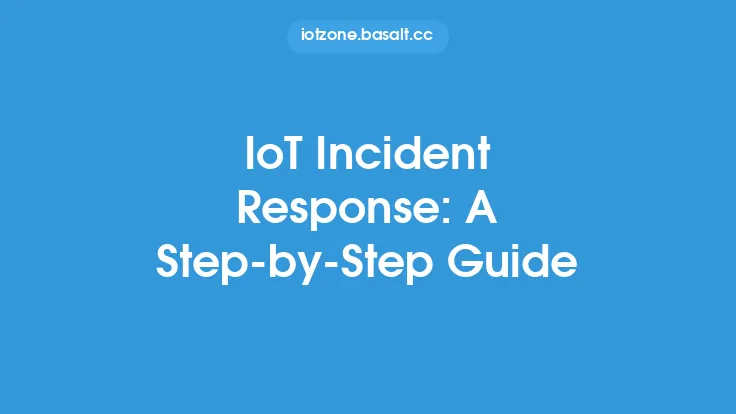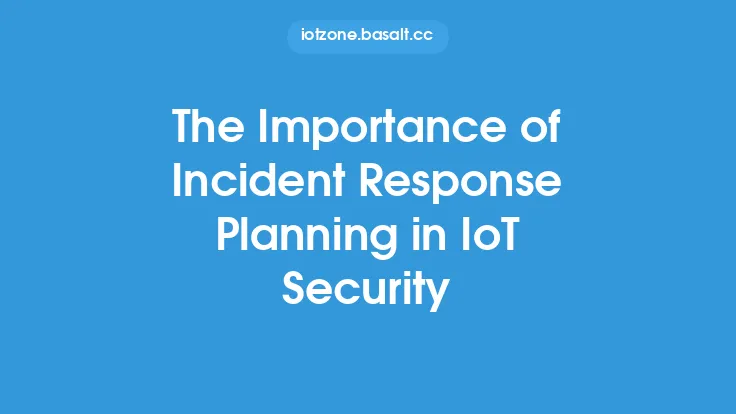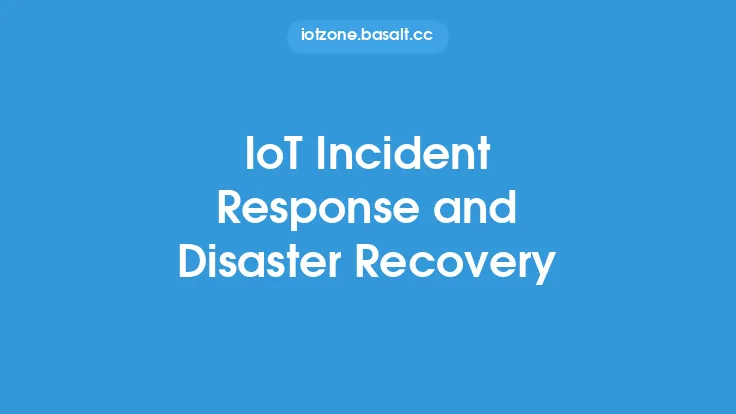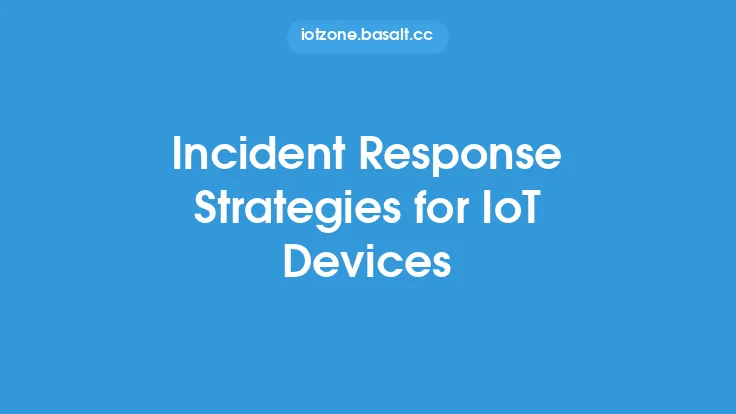The increasing number of Internet of Things (IoT) devices has led to a significant rise in the number of potential vulnerabilities, making IoT security incident response a critical aspect of any organization's cybersecurity strategy. As IoT devices become more prevalent in various industries, including healthcare, finance, and transportation, the potential impact of a security breach can be devastating. In recent years, several high-profile IoT security incidents have highlighted the importance of having a robust incident response plan in place. This article will delve into the lessons learned from real-world IoT security attacks, providing valuable insights for organizations to improve their incident response capabilities.
Introduction to IoT Security Incident Response
IoT security incident response refers to the process of responding to and managing a security incident involving IoT devices. This can include anything from a simple malware infection to a complex, multi-vector attack. The goal of incident response is to minimize the impact of the incident, contain the damage, and restore normal operations as quickly as possible. In the context of IoT, incident response is particularly challenging due to the unique characteristics of IoT devices, such as their limited computational resources, constrained power supply, and often, limited or no human interface.
Real-World IoT Security Attacks
Several high-profile IoT security attacks have highlighted the importance of incident response in recent years. One notable example is the Mirai botnet attack, which occurred in 2016. Mirai was a malware that infected hundreds of thousands of IoT devices, including cameras, routers, and digital video recorders (DVRs), and used them to launch a massive distributed denial-of-service (DDoS) attack against several major websites, including Twitter, Netflix, and Amazon. The attack was particularly devastating because it exploited a vulnerability in the IoT devices' firmware, allowing the attackers to gain control of the devices and use them to launch the DDoS attack.
Another example is the St. Jude Medical pacemaker hack, which occurred in 2016. In this attack, researchers demonstrated that it was possible to hack into a St. Jude Medical pacemaker and alter its settings, potentially putting the patient's life at risk. The hack was made possible by a vulnerability in the pacemaker's wireless communication protocol, which allowed the researchers to intercept and modify the signals sent to the device.
Lessons Learned from Real-World Attacks
The Mirai and St. Jude Medical pacemaker hacks, as well as other IoT security incidents, have provided valuable lessons for organizations looking to improve their incident response capabilities. One key lesson is the importance of implementing robust security measures, such as encryption, secure authentication, and regular firmware updates. This can help prevent attacks from occurring in the first place and minimize the impact of an incident if one does occur.
Another important lesson is the need for organizations to have a comprehensive incident response plan in place. This plan should include procedures for responding to and managing a security incident, as well as protocols for communicating with stakeholders, including customers, employees, and law enforcement. The plan should also include procedures for containing and eradicating the threat, as well as restoring normal operations.
Technical Challenges of IoT Security Incident Response
IoT security incident response poses several technical challenges, including the limited computational resources and constrained power supply of IoT devices. This can make it difficult to implement robust security measures, such as encryption and secure authentication, on these devices. Additionally, the lack of standardization in IoT devices and protocols can make it challenging to develop incident response plans that are applicable to a wide range of devices.
Another technical challenge is the need to balance security with functionality. IoT devices are often designed to perform a specific function, such as monitoring temperature or pressure, and security measures should not compromise this functionality. This requires a careful balance between security and functionality, as well as a deep understanding of the device's underlying architecture and protocols.
Incident Response Tools and Techniques
Several tools and techniques are available to help organizations respond to and manage IoT security incidents. One key tool is network traffic analysis, which involves monitoring network traffic to detect and respond to security incidents. This can be particularly effective in detecting IoT security incidents, as IoT devices often communicate with other devices and systems over the network.
Another important tool is device profiling, which involves creating a profile of each IoT device on the network, including its IP address, MAC address, and other identifying characteristics. This can help organizations quickly identify and respond to security incidents involving specific devices.
Collaboration and Information Sharing
Collaboration and information sharing are critical components of effective IoT security incident response. Organizations should work closely with other stakeholders, including device manufacturers, service providers, and law enforcement, to share information and best practices for responding to and managing security incidents.
This can include participating in industry-wide initiatives, such as the IoT Security Foundation, which provides a forum for organizations to share information and best practices for IoT security. It can also involve working with device manufacturers to implement robust security measures, such as secure firmware updates and secure authentication protocols.
Conclusion
IoT security incident response is a critical aspect of any organization's cybersecurity strategy. The increasing number of IoT devices has led to a significant rise in the number of potential vulnerabilities, making it essential for organizations to have a robust incident response plan in place. By learning from real-world IoT security attacks, such as the Mirai botnet attack and the St. Jude Medical pacemaker hack, organizations can improve their incident response capabilities and minimize the impact of a security breach. This requires a deep understanding of the technical challenges of IoT security incident response, as well as the importance of collaboration and information sharing. By working together and sharing best practices, organizations can help ensure the security and integrity of IoT devices and prevent devastating security breaches.





